CRM (customer relationship management) software is a must-have for any business that wants to survive and thrive in the new remote-work age.
A good CRM software will have features that help organize data, connect teams, and simplify sales and customer service – but at what cost?
What are you willing to pay for a software solution for your real-life business?
If you said “not much,” you aren’t alone, and Recruiting CRM Software companies know this. As a result, most software offerings have 7-Day and 14-Day Free trials.
Trials offer businesses a taste of sweet digital productivity and snatch it away two weeks later.
However, a few CRMs are genuinely free – not many, but a few.
CRMs with Free options (not just Free Trials)
We’ve dug into these free CRM platforms, looking for flaws, upsells, bloatware, etc., to answer the age-old question…
“Can something free actually be good?”
Let’s look at a few examples and find out.
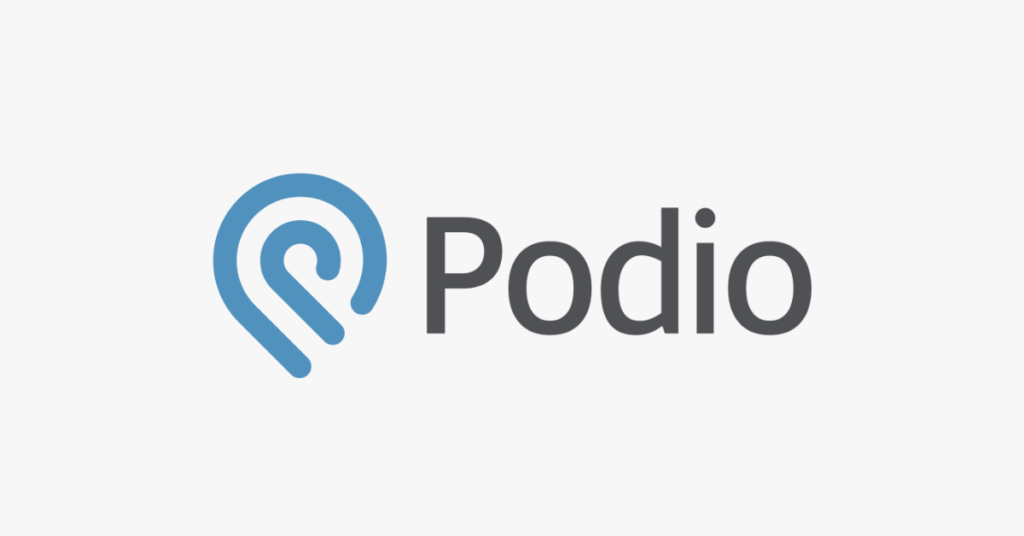
Example #1: Podio
Podio is a highly-customizable, award-winning CRM software that prides itself on being a cheaper alternative to all the expensive software on the market.
Podio is very popular in the real estate community and is ranked as one of the best, if not the best CRM for real estate investors.
It wasn’t until after they were acquired by parent company Citrix that they added “Plus” and “Premium” options – even those are cheap.
So, how does their original Free version hold up against their Paid versions and competitors today?
First, let’s compare the features.
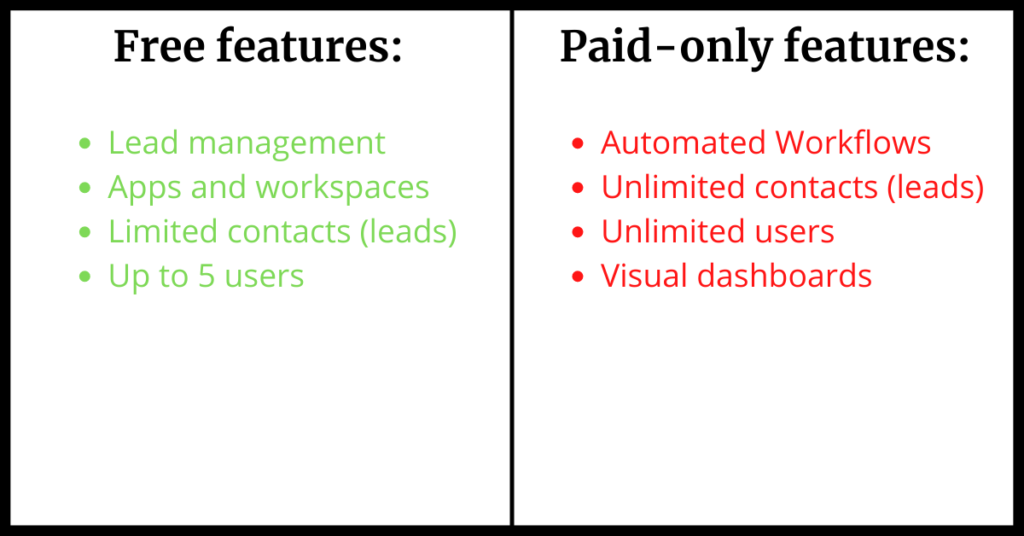
The Free version works well for solopreneurs and small teams (5 or fewer users) and has all the necessary features to run an effective operation.
If you sell a low-ticket product or service, you might run into a bottleneck with the number of contacts you can track in the CRM – but you’d have to have 1,000’s customers for this to be an issue.
You also won’t get access to many automated workflows, but with a small business, sometimes taking a more personal approach to your customers can be a boon to your brand.
Drip campaigns and automated workflows are for businesses with lots of outreach and a massive customer list – so don’t sweat missing out on these features early on.
Verdict
Podio “Free” is great for small businesses, high-ticket products/services, and less tech-savvy folks.
If your team grows beyond five active users, you may want to upgrade to one of the paid versions, but overall you aren’t missing out on most of the great features this software comes with out of the box.
10/10
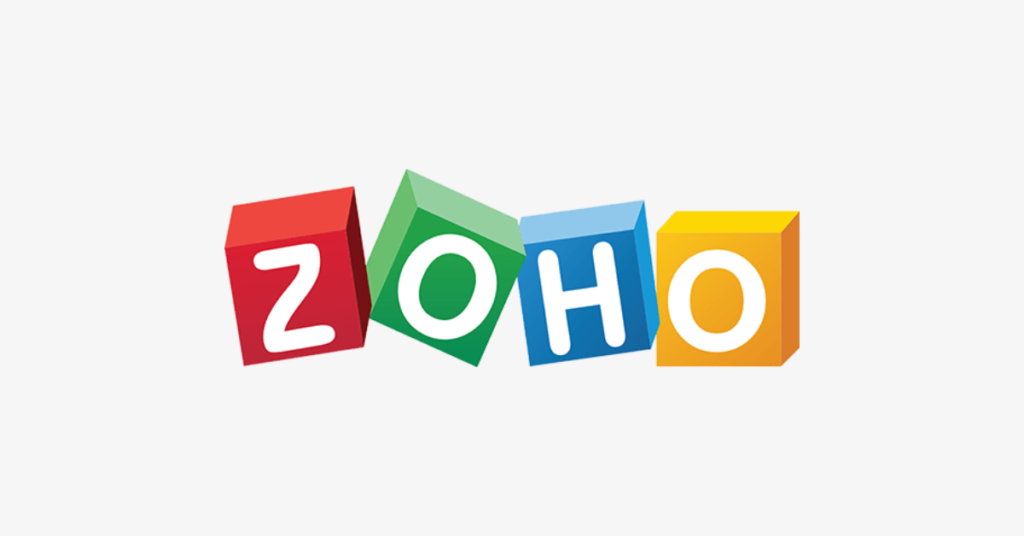
Example #2: Zoho
Zoho has recently made a splash in the CRM scene, snatching the limelight from long-time “gold-standard” Salesforce.
The software has established itself as not just a customer relationship management software but an entire business management software with all the bells and whistles needed.
It integrates with damn-near everything, is so easy to use that you can do away with the IT guy you keep locked in the basement…and has a solid FREE option.
Yes, it has a free plan – something increasingly rare for a significant player like Zoho to have.

We’ve reached a point in the business world where we expect a single software to cover multiple verticals within our company, but it isn’t always the best idea to rely too much on one platform.
Zoho has made a solid push to become an all-in-one platform. Still, a fully-integrated and dependent company might be more at-risk if Zoho ever suffered a major security breach or blackout.
Verdict
The free version of Zoho stands up against other CRMs pretty evenly, but you’ll miss out on some of the more sales-focused features and automation.
A pocket-friendly solution for these missing features would be to “duct-tape” Zoho’s CRM capabilities with other sales software. This way, you’ll have an affordable, powerful alternative to all-encompassing paid CRM options.
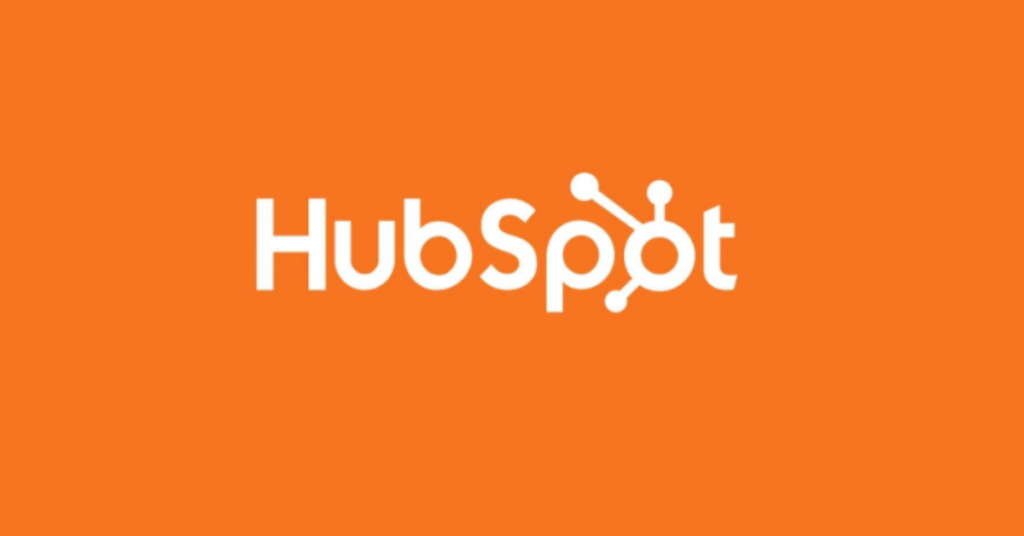
Example #3: Hubspot CRM
Hubspot is an inbound marketing company that saw a gap in the market and created its own tool to fill the void. Their CRM is effectually the “swiss army knife” option that connects hundreds of other applications/integrations in one place.
It is a bonus that many external applications that integrate with Hubspot have free options, so a cash-strapped business can essentially build out a fully-fleshed CRM suite for cheap.
Hubspot’s CRM is forever-free, meaning the software won’t be monetized at any point, so you won’t run into any sneaky charges when using it.
There are no data caps, no user caps, or contact limits.
Hubspot features several out-of-the-box features, like:
- Deal tracking
- Templated landing pages
- Simple email marketing
- Live chat and chatbot functions
- Ticketing for service requests
- And much more.
Simply put, the Free version has everything you’d need to run a simple customer relationship management system but dangles the carrot with its “premium” features.
Yes – there are upgrade options for Hubspot CRM, but they aren’t necessary to get the core functionality.
Verdict
Hubspot CRM works well for pipeline management and marketing integration, connects to hundreds of third-party apps seamlessly, and is one of the few free CRMs that scale with a growing business.
The only drawback is not every third-party app or integration will work with the Free version, so for certain apps, you’ll need options from Hubspot’s paid version.
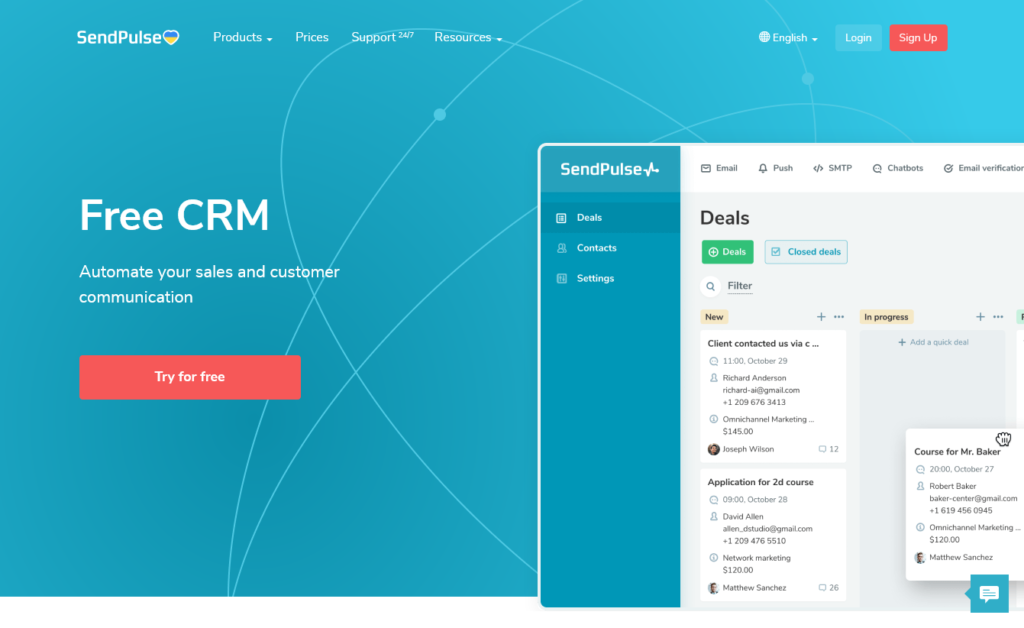
If we are talking about modern CRM systems, then we cannot avoid mentioning SendPulse. Due to its wide functionality, this CRM is ideal for small and medium-sized businesses. The system is easy to use even if the user has no special skills. Directly from the dashboard, you can get to the knowledge base and read the instructions for creating deals, managing contacts and integrations.
SendPulse CRM is currently free of charge. But the company plans to introduce tariffs for using the system, which will differ in limits for deals, the number of team members, etc.
The functionality of SendPulse CRM includes:
* Deal management. You can edit the name, status, and person responsible for the deal. Here you can complete, delete, or share the deal. View the history of editing deals and related events and leave comments for the team.
Adding and filtering contacts, and this can be done directly from the chatbot. You can also download an existing database.
- Various integrations. For example, you have the option of integrating with a virtual PABX or a website builder.
- Separate dashboard for tasks. There, you can create and delete tasks, link them to other tasks, deals and contacts, etc.
- Setting up automatic emails. You can set up sending a trigger email in response to certain user actions.
- Fast communication with contacts through multiple communication channels: through email or chat on Facebook Messenger, Telegram, or WhatsApp.
Other features of the SendPulse service are also available.
SendPulse CRM has a user-friendly and intuitive interface.
Verdict
SendPulse has created a tool that greatly facilitates the work of the sales department of any company. Free CRM is a good help for a start-up business. But, as you know, it is difficult to achieve full-fledged success relying on a customer relationship management system alone. Therefore, an entrepreneur needs to use other features of SendPulse, such as SMS and emailing, Web push notifications and others. Marketing is the engine of trade. And marketing automation is a turbo engine.
eWay-CRM
eWay-CRM is one of the best free CRMs designed to work seamlessly within Outlook.
While using it, there’s no need to learn new software. It mirrors Outlook’s look and functionality perfectly.
It easily connects with your emails, calendar, tasks, and contacts. So, you can easily transform your familiar tools into a professional CRM.
Wrap Up
Yes – free CRMs can be good and fill multiple software needs without costing a fortune. However, if you’re in a corporate environment and need, for example, a CRM for telecom, a free option may not suffice, and you’ll likely need to invest in a custom solution.
Podio, Zoho, and Hubspot CRM are outstanding programs from major companies; any of these CRMs will allow your business to get organized around leads, marketing, and sales processes.
While it would be nice to have all the cool features baked in, all-in-one software solutions are costly to develop and maintain.
SaaS companies offset development and maintenance costs by walling off “premium” features behind a paywall.
These Freemium business models are here to stay, but with some testing and tweaking, an innovative business can find its way around any “paid” limitations.
Don’t be afraid to experiment with various apps and integrations to create a low-cost software bundle that matches one company’s premium offering.